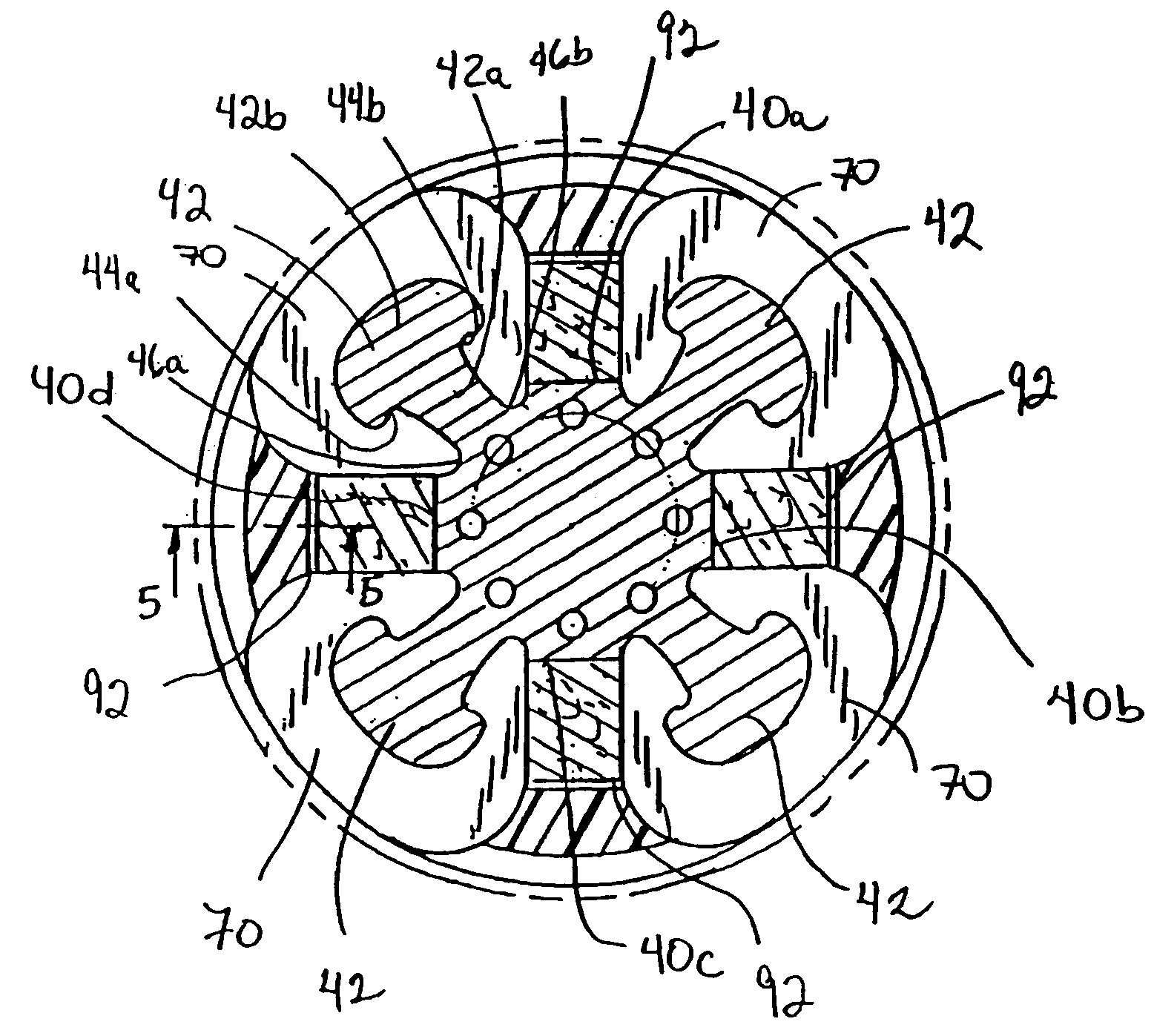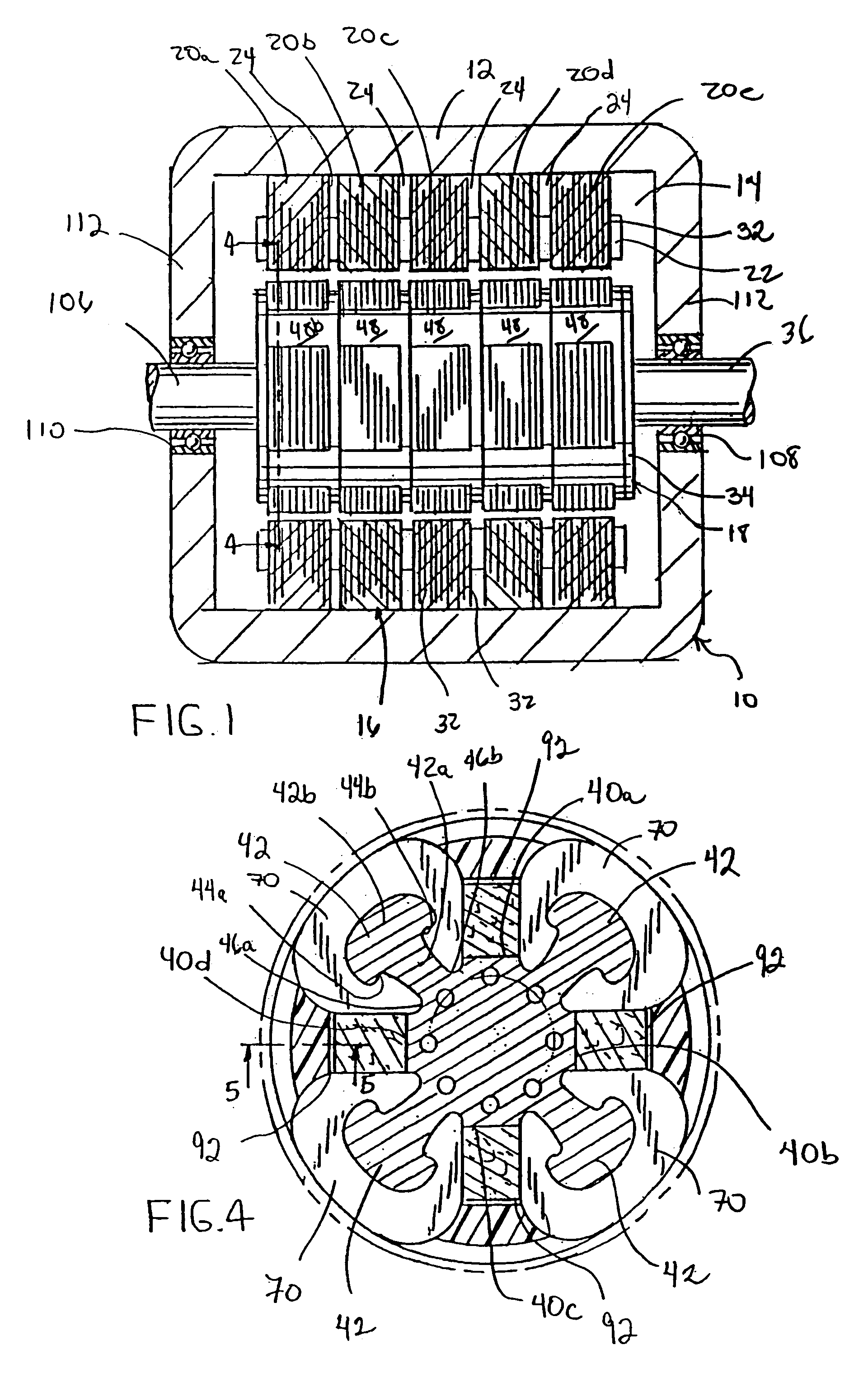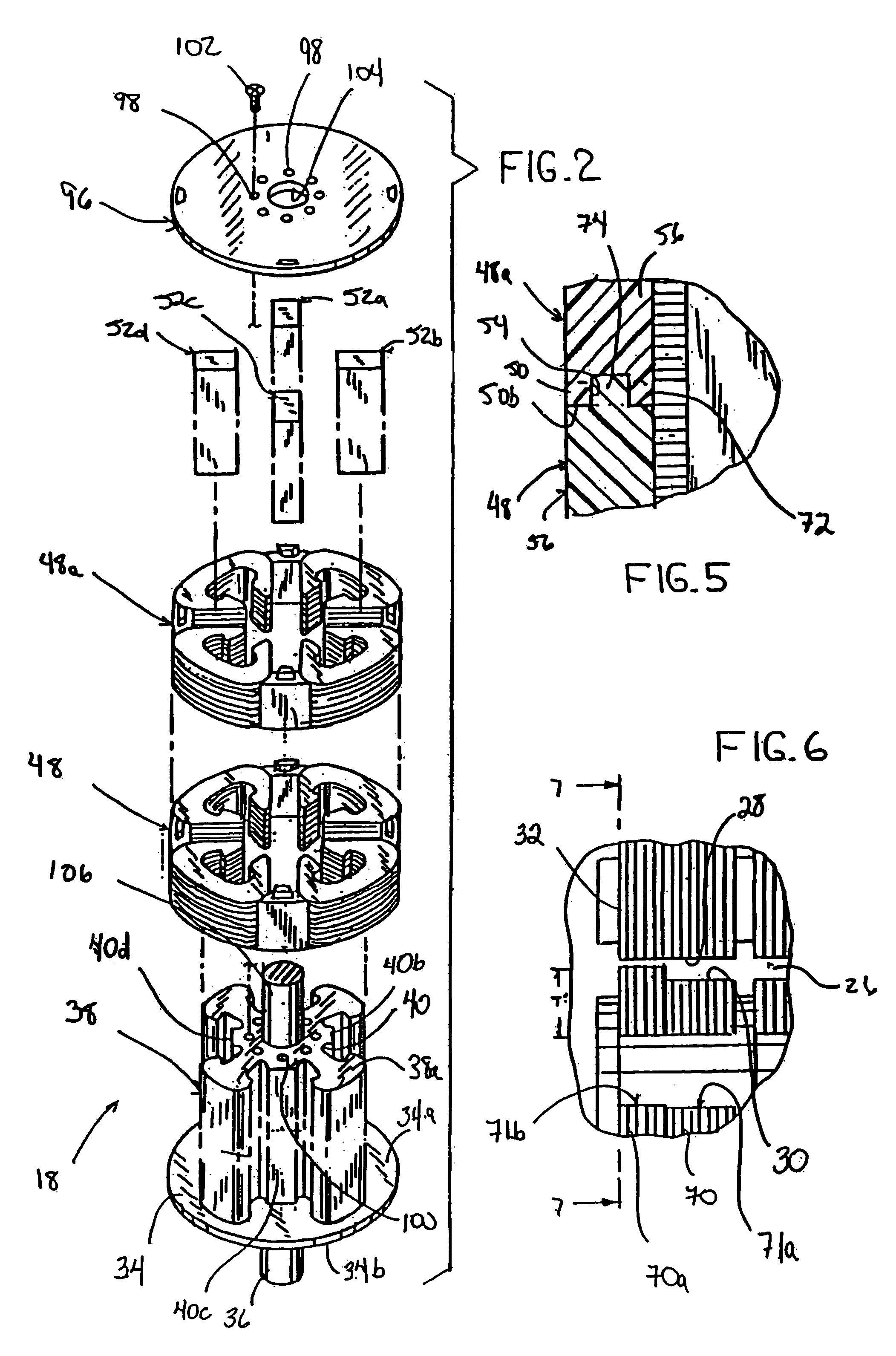High speed rotor
a rotor and high-speed technology, applied in the field of permanent magnet electromechanical machines, can solve the problems of rare earth magnets typically having poor mechanical properties, fewer permanent magnet electric motors or generators that are rated over several hundred kilowatts (kw), and providing high-speed shaft rotation, so as to prevent radial movement of magnets.
- Summary
- Abstract
- Description
- Claims
- Application Information
AI Technical Summary
Benefits of technology
Problems solved by technology
Method used
Image
Examples
Embodiment Construction
[0033]Referring to FIG. 1, an electromechanical machine incorporating a rotor assembly 15 in accordance with the present invention is generally designated by the reference numeral 10. Electromechanical machine 10 includes an enclosure 12 which defines an interior 14 for receiving stator 16 and rotor assembly 18, as hereinafter described. Stator 16 includes a plurality of stator stacks 20a–20e which are positioned adjacent each other and supported by stator frame 22. Radial cooling channels 24 extend between corresponding pairs of stator stacks 20a–20e so as to allow air or an alternate coolant to pass therethrough into air gap 26 defined between the radially inner surfaces 28 of stator stacks 20a–20e and radially outer surface 30 of rotor assembly 18, FIG. 6. As best seen in FIGS. 1 and 6, stator stacks 20a–20e are formed by a plurality of stator pole pieces 32 laminated together.
[0034]Referring to FIGS. 2–3, rotor assembly 18 includes an end plate 34 having first and second opposit...
PUM
| Property | Measurement | Unit |
|---|---|---|
| speed | aaaaa | aaaaa |
| shaft speeds | aaaaa | aaaaa |
| mechanical properties | aaaaa | aaaaa |
Abstract
Description
Claims
Application Information
 Login to View More
Login to View More - R&D
- Intellectual Property
- Life Sciences
- Materials
- Tech Scout
- Unparalleled Data Quality
- Higher Quality Content
- 60% Fewer Hallucinations
Browse by: Latest US Patents, China's latest patents, Technical Efficacy Thesaurus, Application Domain, Technology Topic, Popular Technical Reports.
© 2025 PatSnap. All rights reserved.Legal|Privacy policy|Modern Slavery Act Transparency Statement|Sitemap|About US| Contact US: help@patsnap.com



